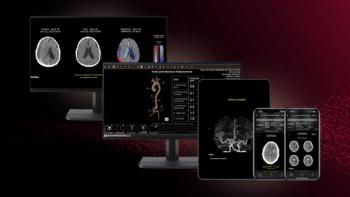
Follow-on Brain CT Key for those on Blood Thinners
A follow-on CT scan can help lower risks of brain hemorrhage for patients with minor head injuries who are taking the anticoagulant warfarin, according to a study published online this week in the Annals of Emergency Medicine.
A follow-on CT scan can help lower risks of brain hemorrhage for patients with minor head injuries who are taking the anticoagulant warfarin, according to a study
Italian researchers enrolled 97 patients receiving warfarin and showing no intracranial lesions on a first CT scan after minor head injury treated at a level 2 trauma center in Ancona, Italy. After 24 hours of observation, they performed a pre-discharge CT-scan follow up, evaluating the frequency of death, admission, neurosurgery, and delayed intracranial hemorrhage.
Of the 87 patients agreed to the second scan, the follow-on radiology consult revealed a new hemorrhage lesion in five patients (6 percent), with three patients being hospitalized. One received a craniotomy for subdural hematoma.
In addition, two patients discharged after completing the study with two negative CT scan results were readmitted within days with symptomatic subdural hematomas; neither received surgery. Two of the five patients with delayed bleeding at 24 hours had an initial international normalized ratio (INR value) greater than 3.0, as did both patients with delayed bleeding beyond 24 hours. Patients with initial INR value greater than 3.0 were 14 times more likely to have delayed hemorrhage, the researchers found.
Guidelines from the European Federation of Neurological Societies guidelines recommend follow-on CT scans strategy for all patients on blood thinners with minor head injury.
“For patients receiving warfarin who experience minor head injury and have a negative initial head CT scan result, a protocol of 24-hour observation followed by a second CT scan will identify most occurrences of delayed bleeding,” the researchers concluded.
Newsletter
Stay at the forefront of radiology with the Diagnostic Imaging newsletter, delivering the latest news, clinical insights, and imaging advancements for today’s radiologists.




























